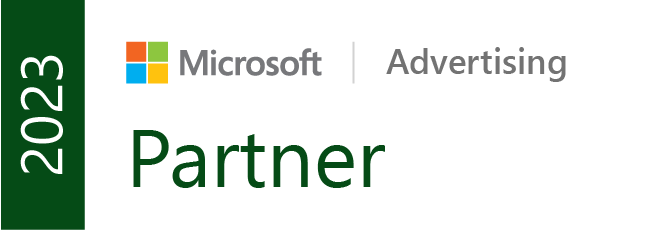
Understanding and interpreting body language can be crucial in various aspects of life, and it plays a significant role in ad creation because it communicates messages beyond words.
Body language refers to the nonverbal signals that we use to communicate. It encompasses a wide range of behaviors including facial expressions, gestures, posture, and eye movements, among others.
Want to brainstorm with our team on new ways to scale your business with YouTube Ads (and other performance video platforms)?
Join us for a free YouTube ad brainstorming session👇
It plays a significant role in human communication, often conveying more information or revealing true emotions than verbal communication alone.
Here are a few examples of ads where body language enhances the message. And a few that potentially contributed to the underperformance of the ad.
Examples that enhance the message:
1. Gestures, eye movements, facial expressions, are all aligned to enhance the message.
2. Confident articulatory gestures align well with the ad’s message.
3. Genuine reactions from real testimonials add authenticity.
4. Open and full gestures paired with genuine smiles strengthen the ad’s sincerity.
5. Lively reactions, fast cuts.
Examples that could be enhanced:
1. The presenter randomly looks to the sides, which may be perceived as dishonesty.
2. Minimal articulatory gestures can detract from the message (this may vary for different cultures though in some cultures excessive gestures are unacceptable).
3. Reactions are shown for too long, which may be perceived as fake.
4. The posture looks stiff, and there are no gestures, and too much blinking, all these may give signals that the presenter is uncomfortable.
5. Smile while talking about such a sensitive topic may be perceived as inappropriate.
8 reasons to consider body language in ads:
Non-verbal communication: Body language, including gestures, facial expressions, and posture, conveys emotions and intentions. In ads, it helps reinforce the verbal message or even convey a different message altogether.
Emotional connection: People connect emotionally with what they see. A smile, a frown, or a confident posture can evoke feelings that resonate with the audience, making the ad more memorable.
Trust and credibility: Positive body language can enhance trust. When people see confident, open, and engaging body language in an ad, it can make the message seem more trustworthy and reliable.
Highlighting product benefits: Body language can showcase product benefits effectively. For instance, a person’s excited gestures while using a product can convey the joy or satisfaction derived from its use.
Cultural relevance: Different cultures interpret body language differently. Advertisers need to be mindful of cultural nuances to ensure that the body language used in ads is appropriate and doesn’t unintentionally convey the wrong message.
Attention and engagement: Body language can capture attention. Dynamic or unexpected gestures can draw viewers’ eyes to the ad, keeping them engaged and interested.
Storytelling: Body language can help in storytelling. It can create a narrative within a short span, conveying a message or a storyline without the need for extensive dialogue.
Brand image and personality: The body language of characters or brand representatives in ads can reflect the brand’s personality. A friendly, approachable demeanor can align with a brand aiming for a warm and inviting image.
Overall, body language in ads is crucial because it taps into subconscious cues, enhancing the effectiveness of the message being conveyed. It’s a powerful tool to communicate emotions, intentions, and brand identity, often complementing the spoken or written content in an ad.
Types of body language gestures commonly used in ads for success:
1. Open and confident posture: A confident posture, with open body language (avoiding crossed arms or closed-off gestures), can convey assurance, credibility, and trustworthiness. It can make the viewer more receptive to the ad’s message.

2. Facial expressions: Expressive facial gestures, such as genuine smiles or expressions of excitement, happiness, surprise, or concern, can evoke emotions and create a connection with the audience.

3. Hand gestures: Controlled and purposeful hand movements can emphasize key points, demonstrate the use of a product, or add emphasis to the spoken message. Avoid overly exaggerated or distracting gestures.

4. Eye contact: In visual ads, direct eye contact with the audience can establish a sense of connection and trust. It helps in engaging the viewers and drawing their attention to the message being conveyed.

5. Proximity and spacial gestures: The use of space and proximity can convey different messages. For instance, being physically closer to the camera or product can create a sense of intimacy or emphasis on the subject.

6. Movement and action: Dynamic movements or actions relevant to the ad’s message can capture attention and create a memorable impression. It could involve a model showcasing how a product is used or demonstrating its benefits through movement.

Avoid mixed signals:
Incongruent body language, like a soft smile paired with crossed arms, can confuse the message.
Visible discomfort, even with a smile, can deter viewers.
The body leaning away suggests discomfort, undermining the ad’s intention.
Editing tips for optimal body language impact:
Cut before awkwardness: Choose clips that avoid unnatural pauses.
Full movement: Use footage that captures the entirety of a gesture.
Zoom and crop: Focus on the most impactful visual elements.
Speed adjustments: Correct pacing can make even awkward movements appear fluid.
The right body language in ads can significantly enhance communication and viewer engagement. It’s essential to ensure authenticity, cultural sensitivity, and alignment with the brand’s identity. By focusing on non-verbal cues, advertisers can create more effective and resonant advertising campaigns.
In fact, the most successful ads consistently showcase body language at its finest. Yet, it’s interesting to note that even ads that don’t perform well can feature skilled actors. This underlines the idea that while body language alone may not be enough to sell a product, it is undoubtedly an essential component in elevating an ad to the top tier.
Want more content like this?
Don’t miss out on the latest news and updates from the world of Direct Response advertising! Subscribe to our newsletter today 👇

Anastasia Tereshchenko, Video Editor
Anastasia is a standout member of our creative team, renowned for her expertise in video editing and production. With an unmatched eye for detail and a wellspring of inspiration, she has profoundly influenced the visual identity of Inceptly and VidTao, making her an invaluable asset to our projects.
Want to brainstorm with us on new ways to scale your business with YouTube Ads (and other performance video platforms)?
Book a free YouTube ad brainstorming session with us here: 👇
Like this post? Let's continue the conversation!
Get in touch with us by shooting us a quick email or tagging us on LinkedIn or Instagram, and sharing your thoughts. Your feedback helps us keep our blog relevant and interesting.
Get Our Newsletter
Need Help?
Get in touch with us for an insightful evaluation of your ads + actionable tips to help amp up your direct response revenue













